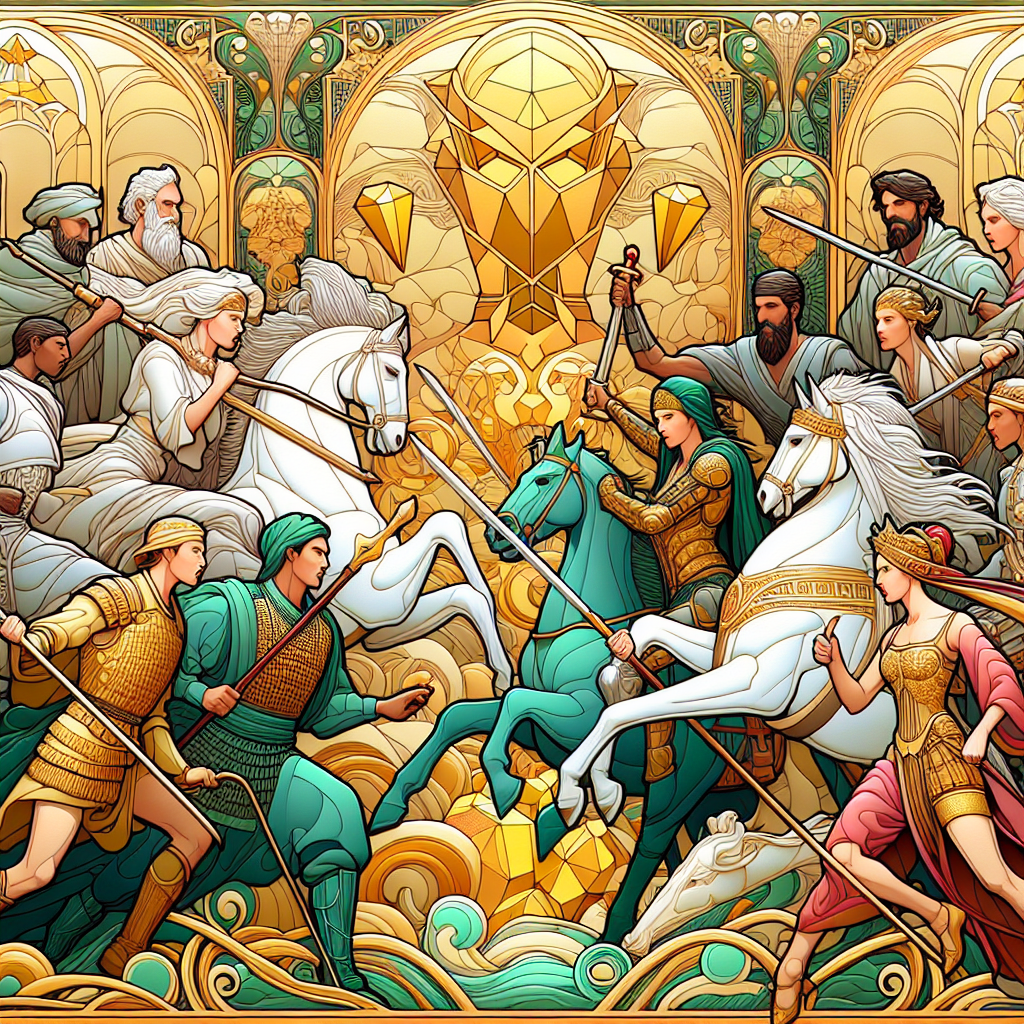Token Standards War: The Battle for the $30 Trillion Tokenization Throne

In the rapidly evolving world of blockchain, a silent war is being waged behind the scenes—one that most retail investors haven't noticed but institutional players are watching with bated breath. This isn't about which meme coin will pump next or whether your NFT collection will finally make you a millionaire. No, this battle is far more consequential: the war for standardization in tokenized real-world assets (RWAs).
ERC-6960, ERC-1155, ST-20—the battle for tokenization standards is getting as confusing as the WiFi router settings in your parents' house. Yet whoever emerges victorious will help shape the distribution of trillions in future value.
The Prize: A $30 Trillion Market
Why all the fuss about standards? Because according to multiple projections, the tokenized RWA market is set to grow exponentially, potentially reaching $10 trillion by 2030, $18.9 trillion by 2033, and a staggering $30.1 trillion by 2034.
To put that in perspective, that's larger than the current market cap of all global publicly traded companies combined. The standards that become dominant will capture value through implementation fees, network effects, and widespread institutional adoption.
It's like the battle between VHS and Betamax or Blu-ray and HD DVD—except with several trillion dollars at stake. No pressure.
The Contenders: Token Standards Vying for Dominance
1. The Ethereum Champion: ERC-6960
Think of ERC-6960 as the evolutionary offspring of ERC-20, ERC-721, and ERC-1155. It introduces a dual-layer classification system using mainId and subId to manage both fungible and non-fungible tokens.
Its strengths:
- Supports fractional ownership of RWAs, enhancing liquidity
- Granular classification perfect for complex assets like real estate
- Integrates capabilities of three previous standards in one solution
If ERC-6960 were at a dinner party, it would be the sophisticated guest who can discuss both quantum physics and reality TV without missing a beat—versatile but with substance.
2. The Multi-Functional Maven: ERC-1155
As a multi-token standard, ERC-1155 can handle both fungible and non-fungible tokens in a single contract.
Its advantages:
- Batch transfers reduce gas fees
- Efficient storage through single contract implementation
- Built-in safe transfer mechanisms
- Enables atomic swaps for complex transactions
ERC-1155 is like that Swiss Army knife you keep in your drawer—not specialized for every task, but surprisingly capable at handling most of them.
3. The Security-Focused Specialist: ST-20
Used by platforms like Polymath, ST-20 takes a different approach, focusing squarely on securities compliance.
Its key features:
- Built-in compliance mechanisms for securities regulation
- Transfer restrictions to satisfy legal requirements
- Interoperability with security token platforms
If ST-20 were a person, it would be that friend who always reminds you to check if you locked your car—a bit tedious sometimes, but you'll thank them when regulatory scrutiny intensifies.
The Battlefield: Where Is This War Being Fought?
The battle for standardization isn't playing out on Twitter threads or Discord channels. Instead, it's happening in:
- Institutional boardrooms – Where banks and financial institutions decide which standard to implement for their tokenization projects
- Regulatory consultations – As regulators work to create frameworks for tokenized securities
- Enterprise blockchain implementations – Where the rubber meets the road in actual usage
- Strategic partnerships – Between blockchain protocols and traditional financial powerhouses
In 2025, the RWA tokenization market is already showing significant growth, with a reported 237% surge reaching $18 billion. But this is still just the opening skirmish in what will be a decade-long conflict.
Strategic Analysis: Which Standards Will Prevail?
If I were placing bets on which standards will dominate by 2030, here's my analysis:
Most Likely to Succeed: Hybrid Solutions
History teaches us that in standards wars, sometimes the winner isn't a single standard but a hybridized approach. The future likely belongs to platforms that can provide:
- Airtight compliance frameworks (borrowing from ST-20)
- Efficient multi-asset handling (ERC-1155's strength)
- Sophisticated classification systems (ERC-6960's innovation)
Dark Horse: Cross-Chain Standards
With the blockchain ecosystem becoming increasingly multi-chain, standards that operate efficiently across different blockchains, like the Omnichain Fungible Token (OFT) Standard, might ultimately leapfrog Ethereum-specific solutions.
Likely to Fade: Single-Asset Standards
Standards that can only handle one type of asset (purely fungible or non-fungible) will likely become niche solutions as the market demands more sophisticated tools.
What This Means For Investors
As an investor, how should you position yourself in this standards war?
1. Diversify across platforms implementing different standards
2. Watch institutional adoption – The standards chosen by major financial players will likely gain momentum
3. Monitor regulatory developments – Standards that easily adapt to regulatory requirements will have a significant advantage
4. Follow the developers – The standard with the most robust developer ecosystem will likely create more use cases
Conclusion: The Long Game
The winner of this standards war won't necessarily be determined by technical superiority alone—history is littered with technically superior standards that lost to more widely adopted alternatives (pour one out for Betamax).
Instead, the victorious standard will likely be the one that strikes the right balance between flexibility, compliance, efficiency, and adoption. In other words, the Toyota Corolla of token standards—not the flashiest option, but the one that simply works for most use cases most of the time.
As the battle unfolds over the next five years, we'll see increased consolidation around a few standards, with specialized applications maintaining niche standards for particular use cases.
One thing is certain: whoever controls the standardization process will hold significant influence over how the $30 trillion tokenization revolution unfolds. The stakes couldn't be higher, even if the battlefields are as unsexy as GitHub repositories and enterprise implementation meetings.
But hey, at least now you can explain to your friends why you're suddenly interested in ERC-6960—because understanding token standards is like understanding the underlying infrastructure of the financial internet. Not always exciting, but absolutely essential.




